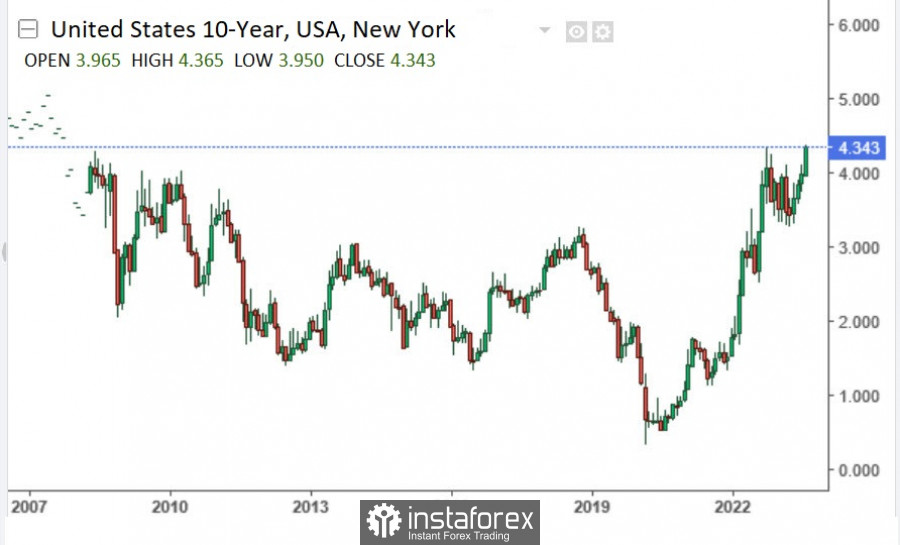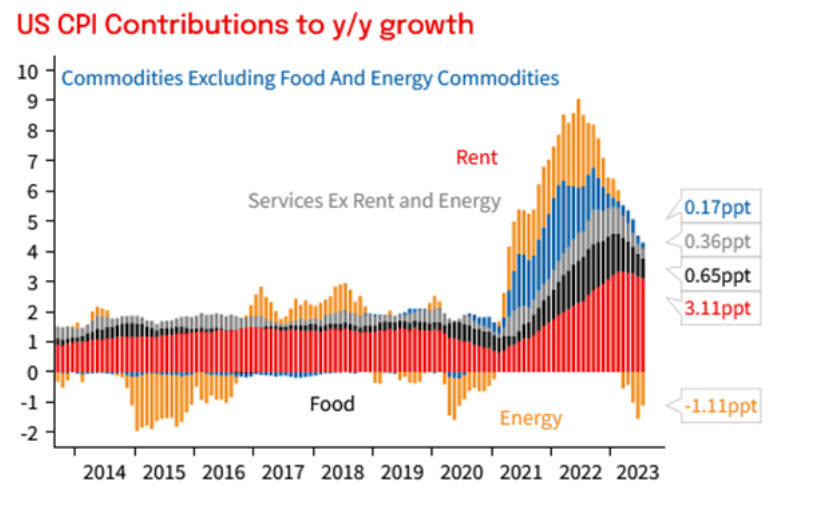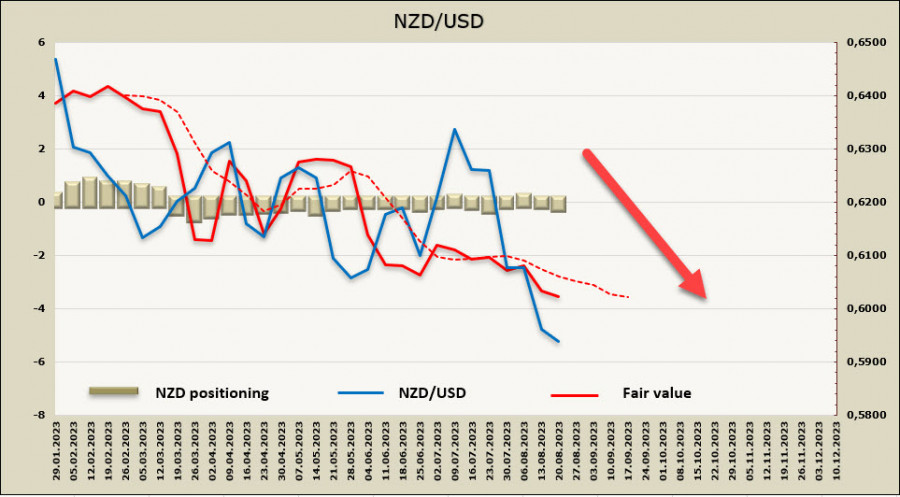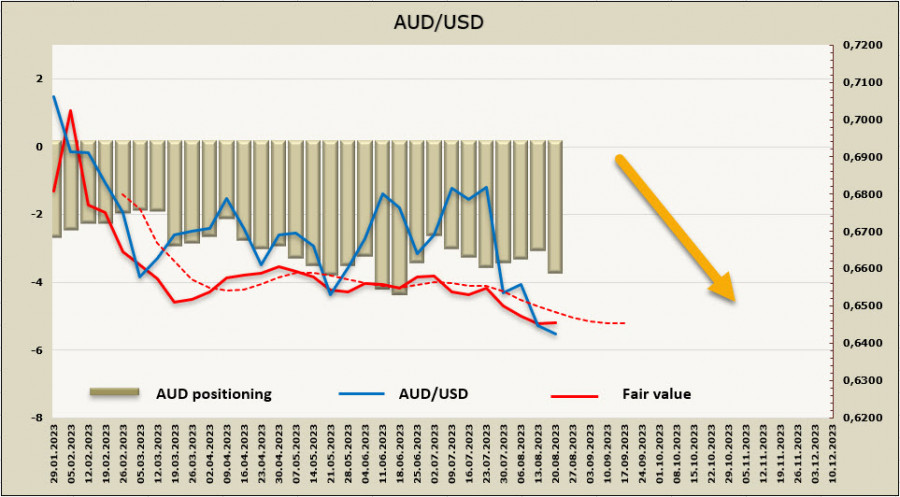US Treasury yields continue to rise, with 2-year bonds exceeding 2% for the first time since 2009, the 10-year rate at its highest since 2007, and 30-year T-bonds setting a record.

On the one hand, the increase in Treasury yields indicates a decrease in risks, as a sell-off in bonds means a sell-off in risky assets. On the other hand, the burden on the US budget increases, and inflation expectations can grow again at any time. The risks on the path of inflation moving to the target level remain high.

The main threat to New Zealand and Australia is China's economic slowdown. Financial stress is increasing, and there are signs that China is heading towards a full-blown financial-economic crisis. The Chinese authorities have tools to prevent such an outcome, but a slowdown in GDP growth is almost inevitable, resulting in a decrease in foreign trade volumes.
NZD/USD
As expected, the Reserve Bank of New Zealand left the rate at 5.5% at the meeting that ended last week. The tone of the accompanying statement unexpectedly gained an additional hawkish tilt due to a slight increase in the rate forecast (by 9bps). The GDP and inflation forecasts changed little, but the updated OCR track from 0.25% indicates that the RBNZ does not consider the current level as sufficiently restrictive as it did three months ago.
The risks for the New Zealand economy are diverse and to some extent offset each other, but in some cases, they intensify. High net migration is a good thing for the labor market, as the increase in labor supply will raise the unemployment rate but simultaneously allow wage growth to be contained, an essential criterion in the fight against inflation.
At the same time, domestic demand is getting weaker, despite the influx of migrants. Exports fell by 14% YoY in July, while a decrease of only 4% was expected. Imports fell by 15% (forecast 8%), partly due to lower global commodity and goods prices. On Thursday, a quarterly retail trade report will be published, which will serve as the basis for the forecasts for consumer demand.
The net short position in the NZD increased by $123 million during the reporting week to -$145 million. Market positioning remains neutral with a slight bearish bias. The price is certainly falling, with no signs of a reversal.

A week earlier, we identified the support zone of 0.5870/5900 as a target, the pair has reached this target, and from a technical perspective, a bullish correction is possible. The nearest target is 0.5975, followed by 0.6010. At the same time, the primary trend remains bearish, so in the long term, after the corrective phase has ended, we expect another wave of sales, with the target being the support zone of 0.5830/50.
AUD/USD
Australia's economic calendar for the week is calm, with no significant economic reports to take note of. The next week will be much more saturated - on August 29, Reserve Bank of Australia Deputy Governor Michele Bullock will speak, and we can look forward to several reports, including the monthly Consumer Price Index for July, retail sales, and investment dynamics for the 2nd quarter, which will allow a preliminary assessment of GDP growth rates.
The RBA rate forecast assumes another increase in November, as the RBA will likely respond to rising business costs, rent, and energy prices. Inflation is declining more slowly than in the United States.
The net short position in the AUD increased by an impressive $620 million over the reporting week and reached -$3.45 billion, with market positioning firmly bearish. The price is below the long-term average but has lost momentum, suggesting an attempt at a corrective phase.

AUD/USD is half a step away from the lower band of the channel; we assume that after a consolidation and, possibly, a small correction, the decline will resume. The nearest resistance is 0.6460, followed by 0.6490, it is unlikely for the pair to enter a sharp uptrend under the current conditions. The nearest target is 0.6320/40; in the long term, we can expect the aussie to move to the 12-month low of 0.6173.
The material has been provided by InstaForex Company - www.instaforex.comfrom Forex analysis review https://ift.tt/KRLk3nG
via IFTTT
